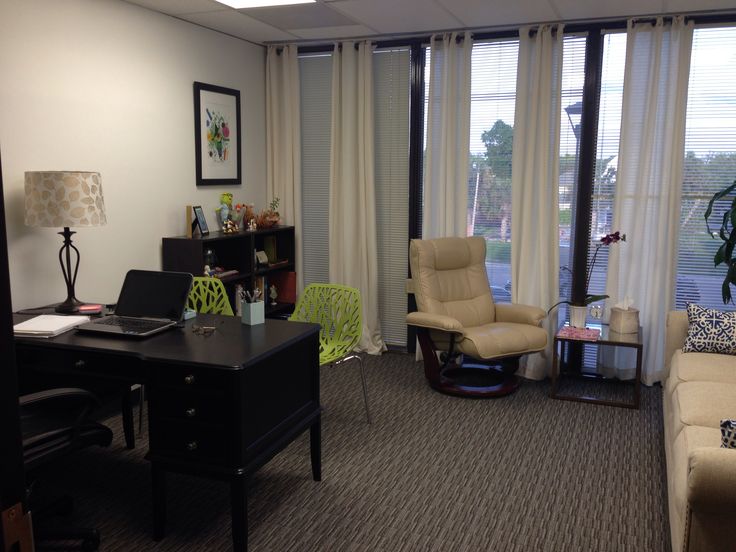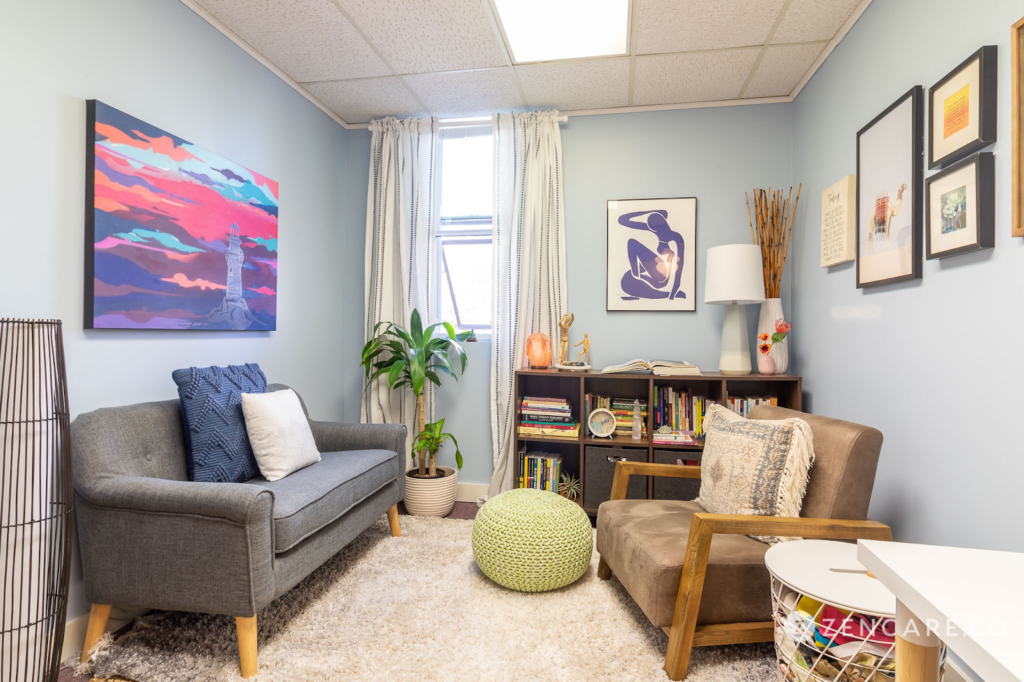First impressions are important. None may be more important than the message your office sends to someone starting therapy. People pick up on nonverbal cues from their surroundings. When someone enters a room, they are receiving messages that can influence their actions and emotions. Some studies refer to people’s perceptions of their surroundings as “unconscious.” They may be aware of their surroundings but are unaware of how they affect how they feel or react.
Your Therapy Office Decoration Professional Ideas are an important part of creating a therapeutic environment. The therapeutic process relies heavily on office decoration. The atmosphere you create in your office has a far greater impact on your clients than you may realize. The way your office is decorated affects how your clients feel and sends a message about you as a clinician. You don’t have to be an expert to create a unique, inviting, and clinically appropriate environment. All it takes is a little effort to make your office space welcoming to your clients.
The way your office is decorated can help to alleviate some of those tensions by creating a safe space for them to seek assistance. It can help your client feel comfortable so that they can begin to open up and do meaningful work with their provider.

The Importance of Therapy Office Design
For clients, seeking help from a mental health professional can be an extremely emotional experience. When people go to therapy, they all have emotional issues, regardless of their background, personality, uniqueness, or history.
Clients who seek professional help are courageous in seeking the attention they require to care for their mental health. The emotional experience of your clients is influenced by the design of your office. Different settings can elicit various emotions and responses, which ultimately influence their experience.
Using tactful therapeutic office decoration can help your clients feel at ease and comfortable when they visit your office. While therapists may want to decorate their offices to reflect their own personalities, they must always prioritize the needs of the client in this setting. Clients must feel at ease in your office in order to know that it is a safe place for them to open up and discuss their lives.
Why is Calming Therapy Office Decoration essential?
The client experience is greatly influenced by the therapy office decor. The environment that service providers create for their clients can influence how comfortable people feel during the therapeutic process. Colors, shapes, textures, and other factors can all influence human emotions and receptivity, especially in emotionally charged situations.
Calming Therapy office decor can make clients feel more at ease. Cool colours such as blues, muted purples, greens, and neutrals can create a relaxing atmosphere. A soft cushioned couch, a fuzzy pillow, or a cosy blanket can provide feelings of comfort and warmth during an otherwise uncomfortable or emotional conversation.
Like, A rough-textured couch that is scratchy or itchy can distract a client and make them feel uneasy. Reds and neons, for example, can heighten feelings of anxiety. Overall, if something is “loud,” it is likely to elicit negative emotions. Colors that are perceived as “bright” or “happy” in other contexts may be perceived differently in the therapeutic setting.
The overall impact of decor on the client experience is noteworthy, and therapists should consider this when selecting decor for their therapeutic space.
How Different Designs Affect Different Responses
Different designs can evoke varying responses from patients. A colorful, busy, or loud room, for example, may elicit more anxious or distracted responses from patients. Interior design has psychology that is supported by research. Human environments, according to studies, can influence emotions.
Elements that influence mood include:
- Light
- Color Pallet
- Textures and Patterns
- Room Organization
- Other Sensory Elements
Therapeutic design is a creative process that providers must consider when structuring their office environment. Cool, calm colors, lots of light, and clean/uncluttered spaces, for example, are some of the most calming and comfortable environments for mental health clients.

Tactful Therapy Office Decoration Professional Ideas
Let’s learn more about the significance of tactful office design and how to create the ideal therapeutic environment.
Workplace
Consider the implications of shape and size when selecting your workplace space. Is it filled with corners, or is it more open with fewer barriers? While sitting in a small space may seem comfortable to some, it may cause claustrophobia in others. Open spaces with high ceilings, according to research, may be more conducive to emotional exploration.
A large space, on the other hand, may have a negative impact on how people interact. This has the potential to prevent people from opening up during a session. Furthermore, a small office with large windows overlooking a beautiful view would have a very different effect than a larger office with few windows.
Intentional Light
Natural light can be a great way to brighten up a space and make it feel more approachable. Not all therapists are blessed with windows and good lighting in their office, unfortunately. For this reason, providers need to be intentional about the amount of light they have in their room. The goal is to create a comfortable and inviting space that your client can thrive in, not make them feel like they’re in a dark and scary dungeon.
Providers who do not have natural light or maybe the light is too harsh in their room should invest in lamps. Lamps placed around different areas of an office can make it feel homey, cozy, and inviting.
Natural Colors
Think earth tones and light shades of the colors you love. Your office can still reflect you as a therapist. Just take the color you love and find lighter, toned-down versions of those colors to use in your office.
If you are not sure where to start, cool tones and earth tones can both be used to create a calming effect in your office. Providers should lean toward these color pallets when creating a therapeutic office environment and stay away from too many harsh colors like reds or neon colors.
Colors unintentionally bring out certain responses in clients that disrupt the therapeutic process. Like
- Red: Body- Physical exertion
- Green: Emotions- Balance, calmness & reassuring
- Blue: Mind- Boost productivity
- Yellow: Creativity- Self-confidence
Furniture
Nothing is worse than trying to have a conversation with someone and not being able to engage because you are uncomfortable. While it might be tempting to find the most affordable couch or chair for your space, comfort is more important for the client.
Any furniture that your client will use during a session should be comfortable for them so that it does not distract from their experience. Comfortable couches or chairs along with comfy decorative pillows can help them feel like they are talking to you in the comfort of a home rather than in a clinical setting.
Clocks
Clocks placed strategically benefit both you and your client. You’ll need at least two: one visible to you and one visible to your client. But make certain it isn’t a ticking clock! During a session, this can be an unwelcome distraction.
Posters for Therapy
Therapist posters are an excellent way to communicate important mental health concepts to your patients. Posters that are visually appealing can elicit a positive emotional response.
Look for posters with positive affirmations or therapy concepts that your clients can apply in their daily lives. Clients have commented years later on a single poster that introduced them to a concept that forever changed their perspective.
Fragrance
Avoid overpowering fragrances. While you may enjoy a particular scent, your client may not. Subtle fragrances that resemble natural, fresh fragrances are a good place to start.
Tie in Nature
Nature is a powerful tool when creating a comforting, safe place for clients. For a lot of people, being in nature inspires a unique sense of peace. Try placing plants around your room or using art that resembles calming outdoor scenes. Nature around your office can be a fantastic way to replicate this kind of peace.
This does not mean therapists need to try and create a forest in their space, but there are some creative ways to bring nature indoors. For example, having plants around the office, pictures of outdoor scenery, or even scents that smell like the outdoors can all help a client connect to the peace that nature inspires.
One word of caution when selecting decor: Avoid overloading your space. You’ll want to keep it uncluttered so your clients don’t feel stuffy or cluttered.
Overall, selecting soothing therapy office decor will result in a positive client experience and a stronger provider-client relationship. Therapeutic office design has a huge impact on the client experience. With the right environment, your client won’t be distracted by their environment and will feel comfortable enough to open up about their lives. Consider decor that would make you feel safe. Once you’ve created the ideal environment for your clients, you can start providing them with the top-notch care they deserve.
For more information__
Call @ +1 (224) 999-6997
Or
Get a free no-sting attached billing services quote from ZEE Medical Billing for your practice.




